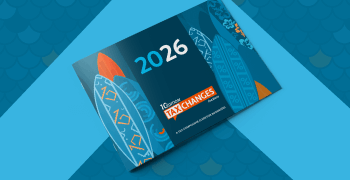How does DC tax a soft drink? Let me count the ways – Wacky Tax Wednesday
Is one tax on a sweet beverage better than another? The Council of the District of Columbia seems to think so.
On October 1, 2019, the District began collecting an extra 2-percent tax on the gross receipts of soft drinks, which were previously subject to the general sales tax rate in Washington, D.C. The extra tax applies to most non-alcoholic drinks with natural or artificial sweeteners, although 100-percent fruit or vegetable juices are exempt from the tax, as are beverages comprised of at least 50 percent milk, soy, rice, or similar milk substitute.
In the coming months, the council will consider replacing the new 8-percent tax on soft drinks with a 1.5-percent excise tax on sugary drinks.
Under the Healthy Beverage Choices Amendment Act of 2019, introduced last week by Councilmember Brianne Nadeau (and signed by eight other councilmembers), a 1.5-percent excise tax would apply to the privilege of “distributing sugary drink products within the District.”
The bill defines “sugary drinks” as “any beverage that has a natural common sweetener” such as:
- Brown sugar
- Fructose
- Glucose
- Granulated white sugar
- Sucrose
- Other sugars (e.g., agave nectar, honey, molasses, and xylem sap of maple trees)
- The proposed excise tax would apply to a bevy of beverages, including fruit juice with added sweeteners, Gatorade, and sweetened coffees and teas. It would not apply to:
- Alcoholic beverages
- Beverages for medical use
- Beverages with milk as the primary ingredient
- Baby or infant formula, or other products used to feed infants
- Diet soda
- 100-percent fruit or vegetable juice
- Unsweetened beverages that can be sweetened, upon request, by the seller at the point of sale
Why change from a sales tax to an excise tax?
Washington, D.C.’s current tax on soft drinks is a gross receipts tax. Like other sales taxes, it’s tacked on at checkout so it’s in addition to the sales price.
The proposed excise tax would apply to:
- The supply of a sugary drink to a retailer in D.C.
- The acquisition of a sugary drink by a retailer in D.C.
- The delivery of a sugary drink to a retailer in D.C.
- The transport of a sugary drink into D.C. by a retailer
The tax would generally be due on the first nonexempt distribution (barring exemptions). Since the taxable transaction would take place prior to the final sale to the end consumer, the tax would be included in the final sales price. This would translate to higher prices on the shelves.
Research indicates that higher prices are more likely to dissuade consumers from purchasing sweet beverages than a sales tax, which is added after the drink is already in hand.
Is there another way?
Soda taxes in the United States all target beverages with sugar and other sweeteners. The choice for consumers is clear: Pay extra to drink the drinks you want or choose other drinks.
There is another way. According to the Tax Policy Center, taxing the sugar content of beverages could be more effective than taxing beverages with sugar. This has proved effective in the United Kingdom, where San Pellegrino significantly cut the sugar — and corresponding sugar tax — on its sodas, and consumers still enjoy their favorite drinks while consuming less sugar.
If D.C.’s proposed excise tax is adopted and fails to lead to the desired results, perhaps the D.C. Council will consider a tax on sugar content. You never know, the third tax could be the charm.
Keep current on soda taxes and other sales tax news at the Avalara blog.

Avalara Tax Changes 2026 is here
The 10th edition of our annual report engagingly breaks down key policies related to sales tax, tariffs, and VAT.
Stay up to date
Sign up for our free newsletter and stay up to date with the latest tax news.














